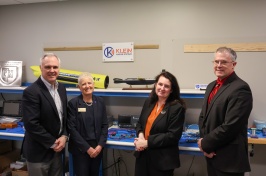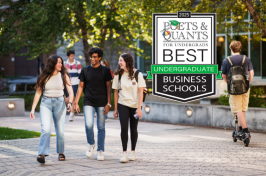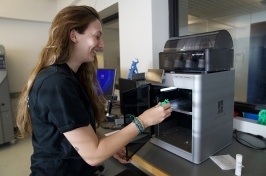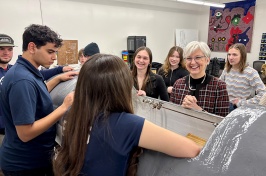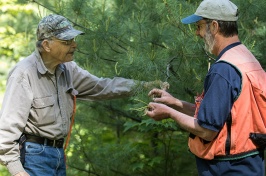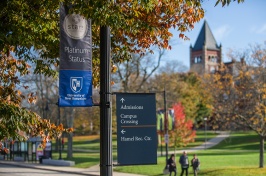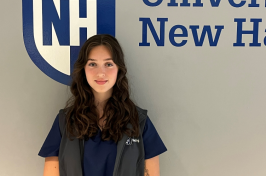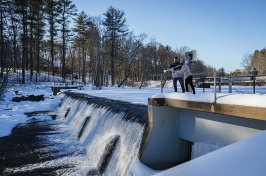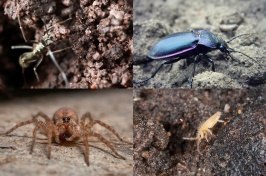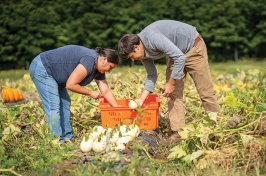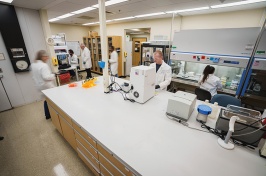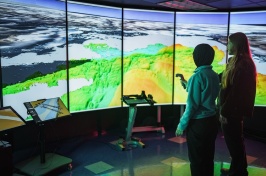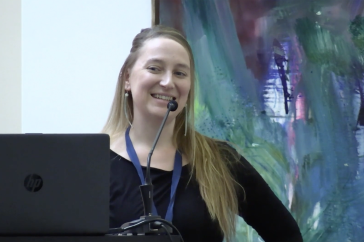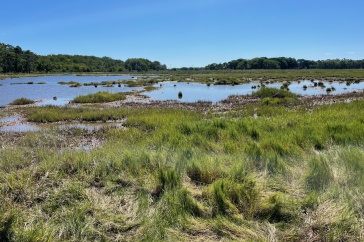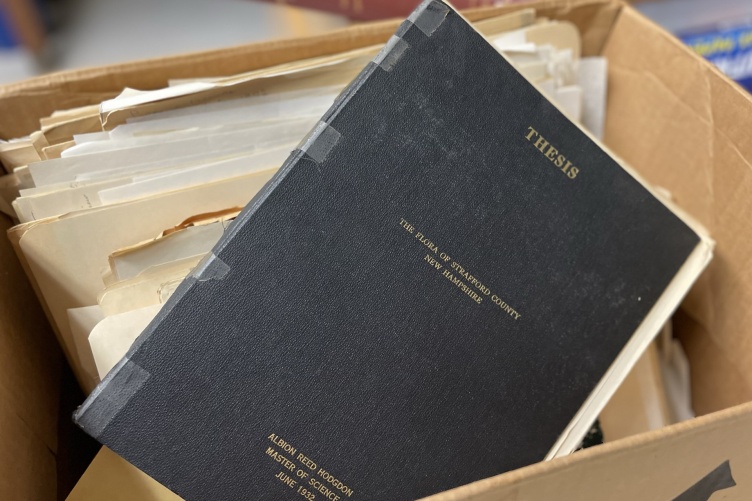
One of the boxes of Albion Hodgdon's documents found during the pack-up of the herbarium
A treasure trove of long-forgotten documents from Albion Hodgdon, one of UNH’s most influential professors and scientists, has been discovered. Erin Sigel, the Albion R. Hodgdon Herbarium collections manager, found the boxes of personal correspondence, scientific field notes and sketches, and unpublished manuscripts while packing up the herbarium, which was named for Hodgdon, in preparation for its temporary relocation during the renovation of Spaulding Hall.
“Hodgdon’s work forms the basis for our current understanding of flora in New Hampshire,” says Sigel. “The herbarium is the physical record of that.”

Hodgdon was a well-known and accomplished scientist. During his tenure at UNH, he grew the herbarium collection from 1,500 specimens to 118,000, authored 137 scientific publications and served for 12 years as the editor of Rhodora, New England’s premier botanical journal. Hodgdon also served as chair of the UNH botany department from 1947-1967. One of his most lasting achievements was his effort to establish the university’s doctorate program, which contributes to UNH’s current designation as a Carnegie R1 research university. It is a designation awarded only to schools with the highest research output. UNH’s first two doctoral graduates were botany students. When Hodgdon passed away in 1976, his obituary was in the New York Times.
The herbarium is itself a hidden gem. Home to more than 206,000 specimens from 82 countries, it has particularly well-respected collections of New England flora, especially seaweed. The collection also contains some 1,500 botanical books, the earliest of which is a guide to medicinal herbs dating back to the 1600s.
Inside the herbarium, the walls are lined with 127 floor-to-ceiling, climate-controlled cabinets. “In each cabinet there are shelves of folders that organize specimens taxonomically — by family, genus and species,” says collections assistant Julia Hobbie. “It’s a bit like a library.”
One of nearly 3,000 herbaria worldwide, the Hodgdon Herbarium can loan or trade specimens with other institutions, and UNH classes are free to use the herbarium’s teaching collections. Researchers worldwide can borrow physical specimens or access the herbarium’s digitized collections. To date, the herbarium’s specimens have been used in 733 scientific publications.
“These specimens are a source of primary data on the morphology, distribution and ecology of the world’s plant diversity, as well as a source of DNA for genetic research,” says Sigel. The herbarium is currently involved in several research projects, including an effort to determine whether an extinct species of grass — previously documented only in Manchester, New Hampshire and last seen in the 1930s — has been rediscovered thousands of miles to the south in Mexico.
Running the herbarium takes a whole crew of dedicated staff. In addition to Sigel and Hobbie, there are four undergraduates who regularly work to press, freeze, mount and digitize new specimens.
“I have learned so much during my time there,” said Mariah Reitzel ’23, a biology major who assists in the herbarium. “Each day I am amazed at how I may walk into work and hold a plant from Europe or even one from the 19th century still intact! I get to see more plant diversity than I would have ever thought during my time at UNH.”
It’s all the legacy of Albion Hodgdon. “Hodgdon was a big personality here at UNH,” says Sigel. “He was very charismatic and influenced several generations of botanists.”
It's an influence that continues today.
-
Written By:
Benjamin Borgmann-Winter | UNH College of Life Sciences and Agriculture







